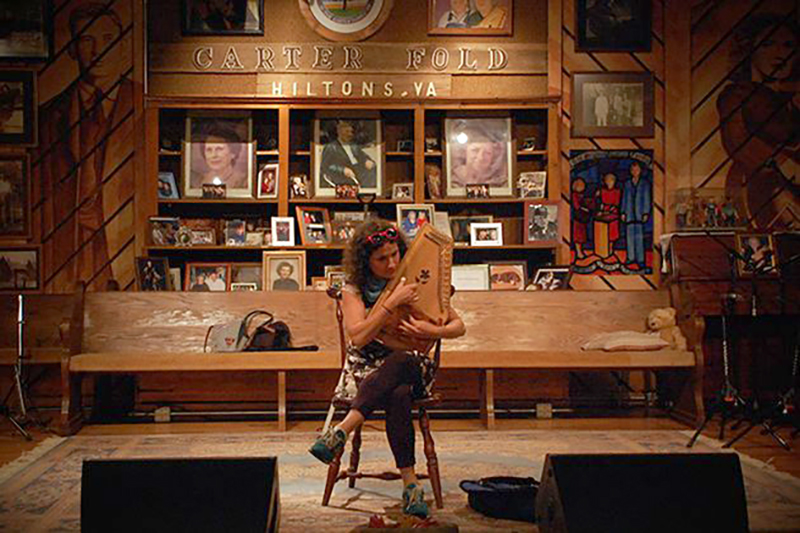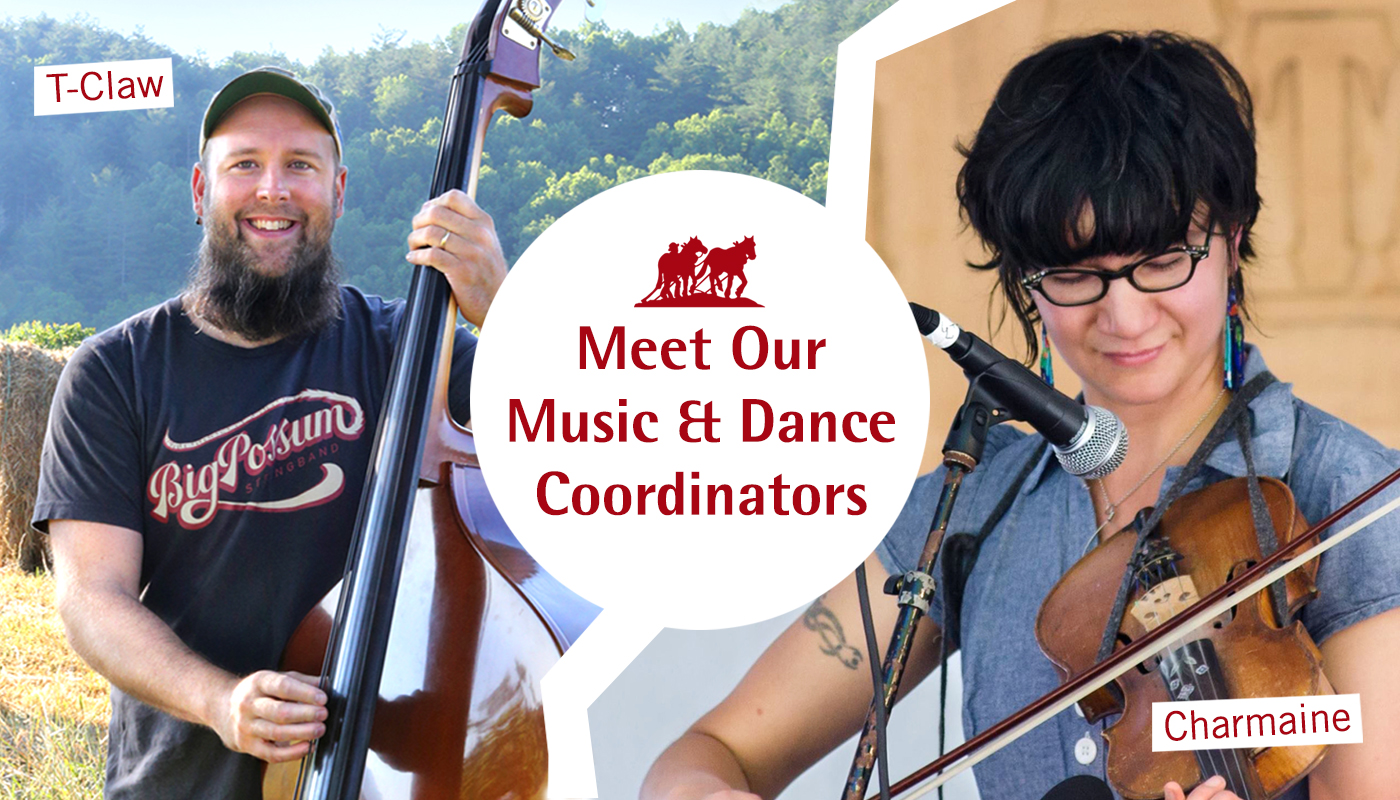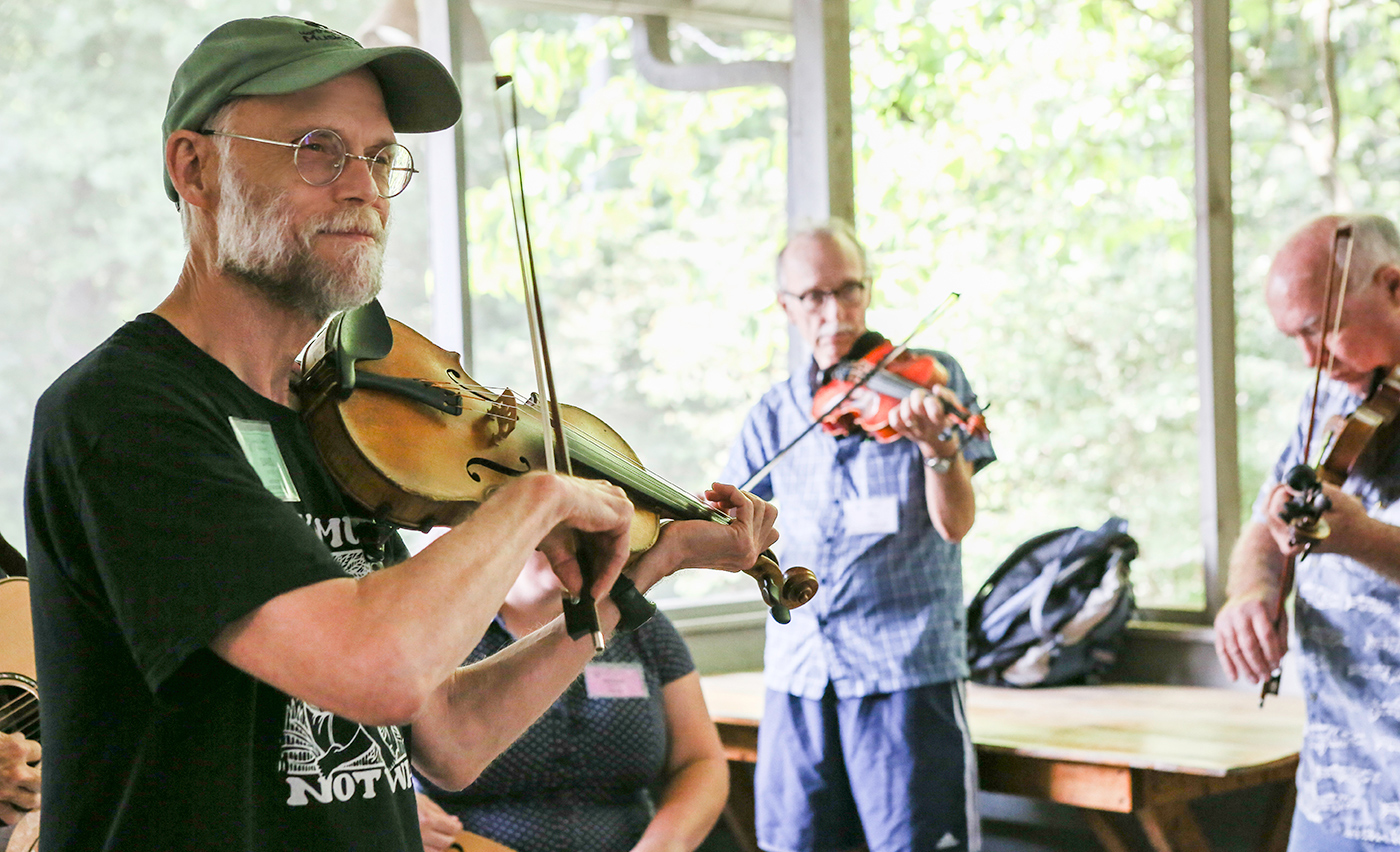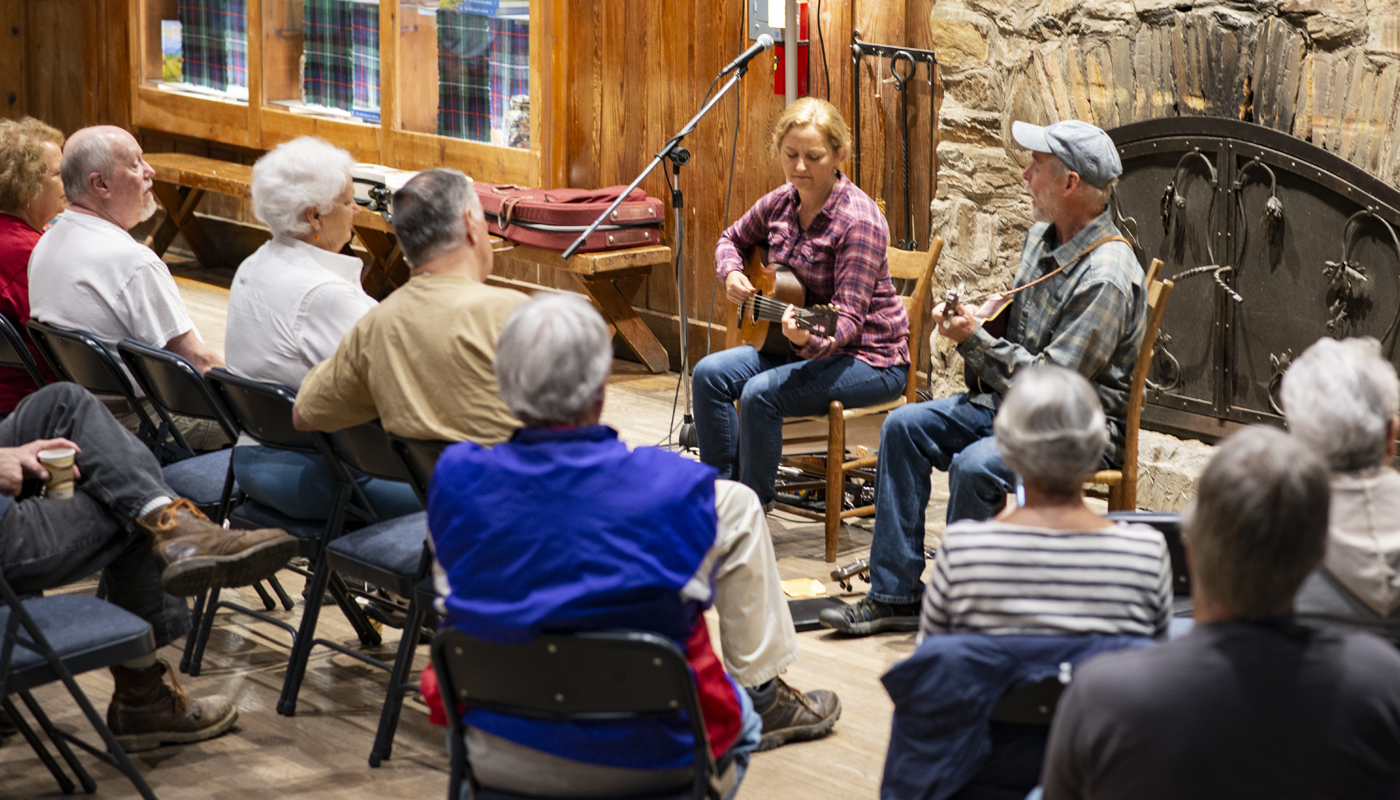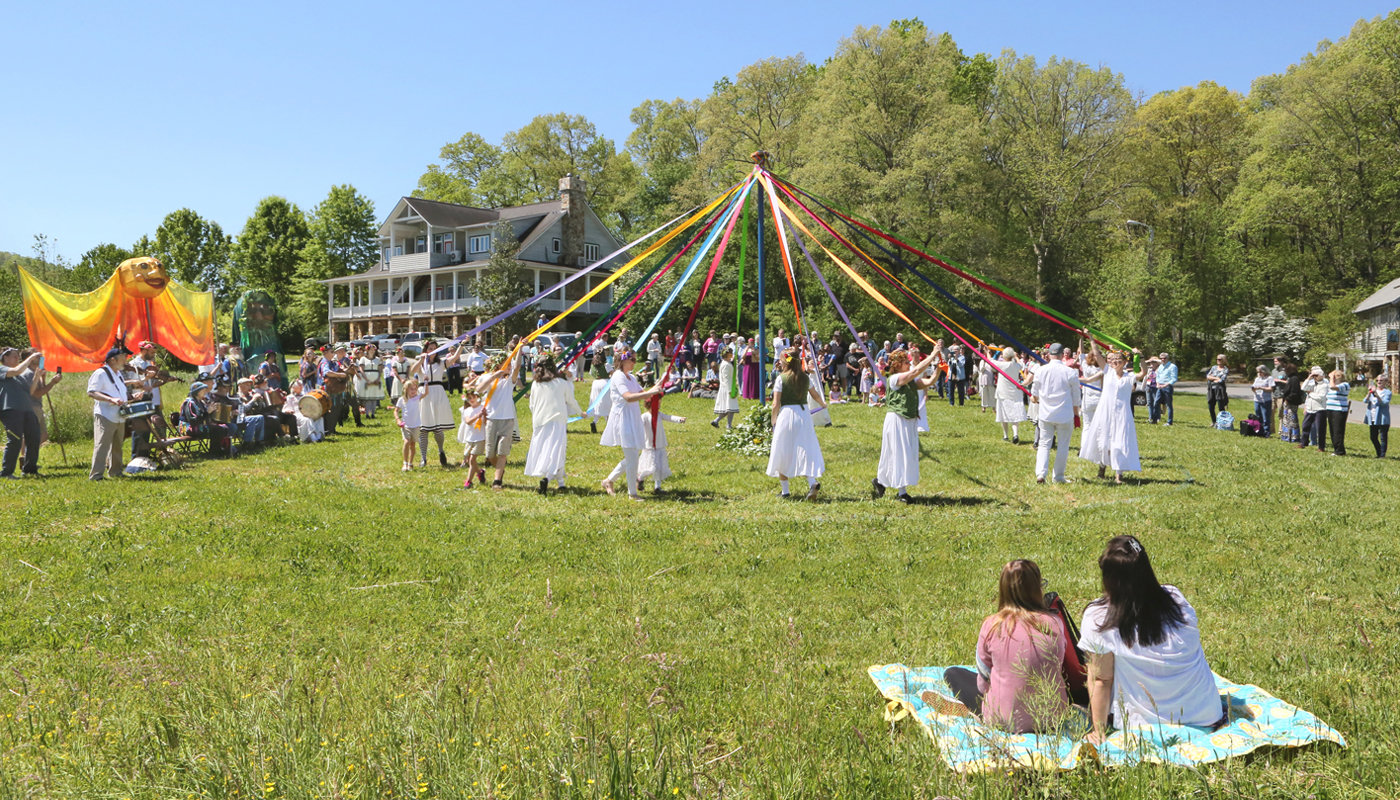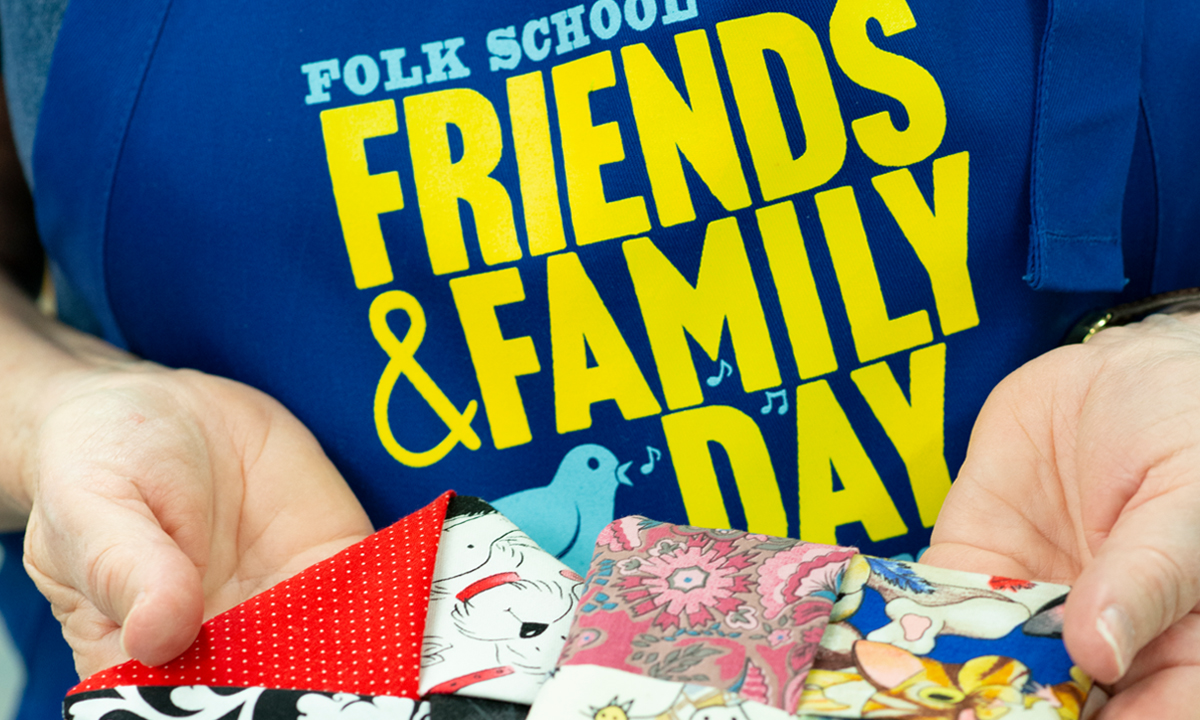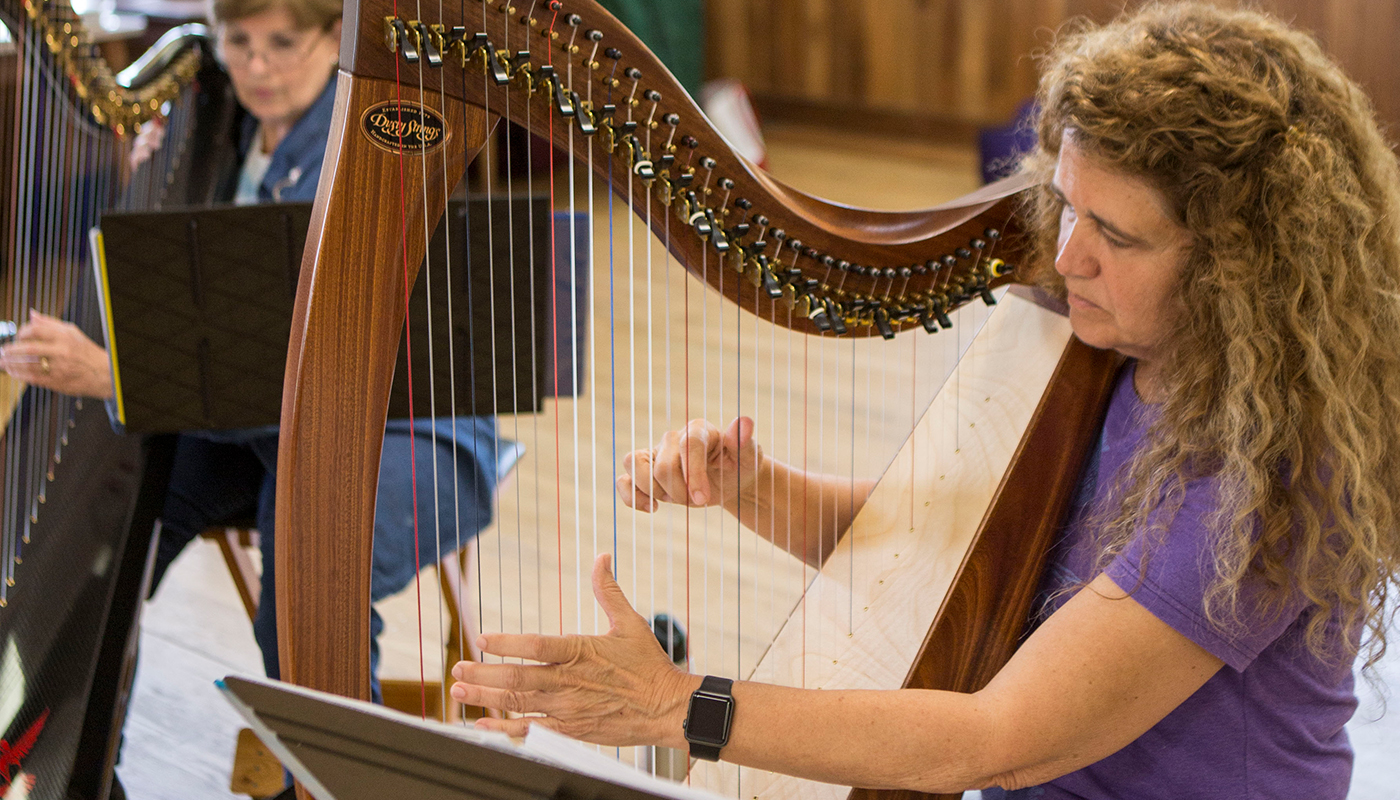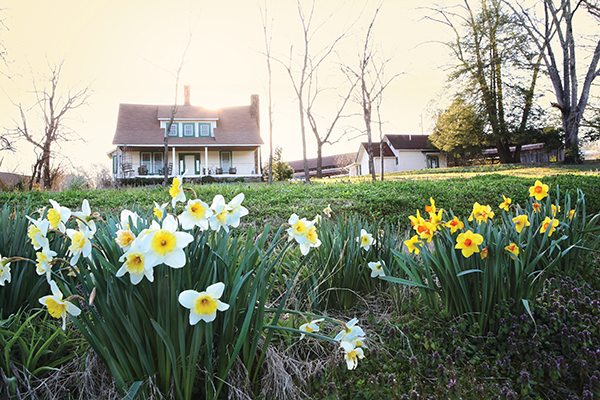
Stories: Music
29 Jun Announcing Our New Music & Dance Coordinators: T-Claw Crawford & Charmaine Slaven!
We are thrilled to announce...
03 Jun Remembering David Kaynor by Sue Songer on Behalf of the DMW instructors
David Allen Kaynor passed away...
22 May Tune Into Virtual Morningsong Every Friday
Join us every Friday morning...
01 May A Look Back at Folk School May Day Celebrations
Wishing you a happy May...
15 May Thank You for a Wonderful Friends & Family Day
Posted at 09:40h
in Community, Events, Stories: Dance, Stories: Friends and Family Day, Stories: Music 0 Comments
We had a wonderful time...
02 Apr Folk Harp Gathering
Folk harp enthusiasts! Come celebrate...
31 Mar Flourishing at the Folk School: Corie Pressley
Corie Pressley has lived in...
13 Apr Double Rainbow Over the Folk School!
...
04 Apr Folk School JAM Program Passes on Appalachian Musical Traditions to Local Teens
On Friday, April 8, high school students in the Folk School JAM Program played a concert in the Community Room to celebrate the conclusion of the first session. Under the direction of Johnny Scroggs (guitar) and Peggy Patrick (fiddle), students spent 12 weeks learning traditional Appalachian music as part of the Folk School JAM program. We recently sat down with Program Director Hannah Levin to find out more about this wonderful program preserving traditional Appalachian music in our local high schools. Read on to find out how you (or your teen) can get involved! [caption id="attachment_14703" align="aligncenter" width="630"]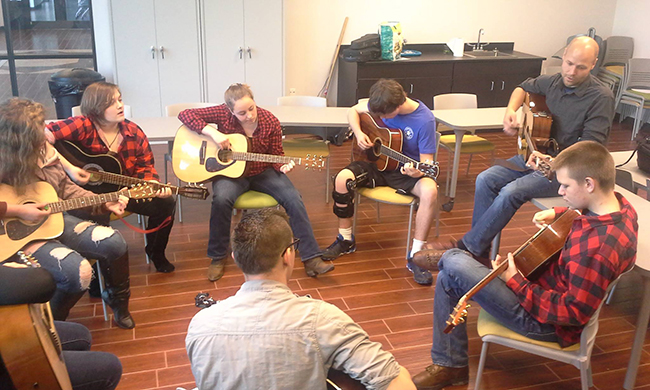 Johnny Scroggs leads a guitar lesson[/caption]
Johnny Scroggs leads a guitar lesson[/caption]



